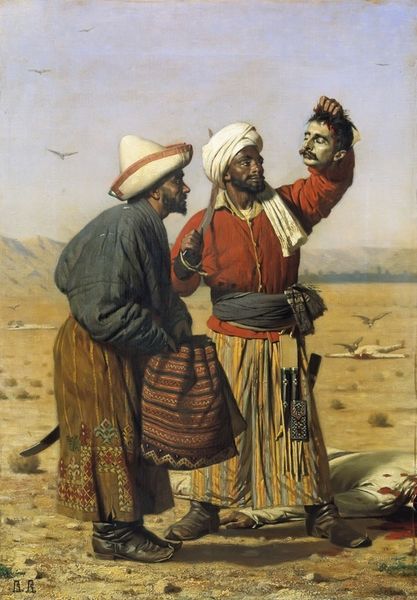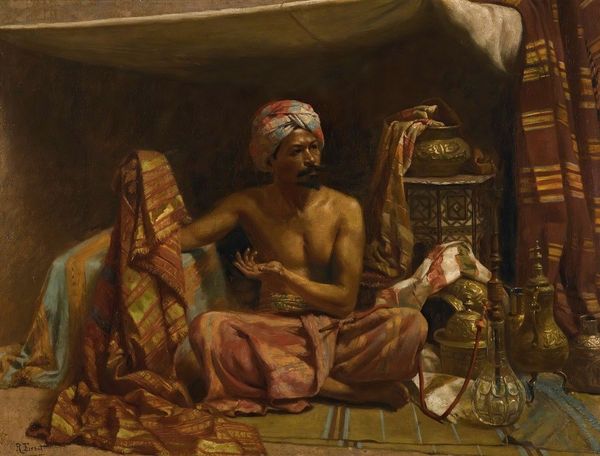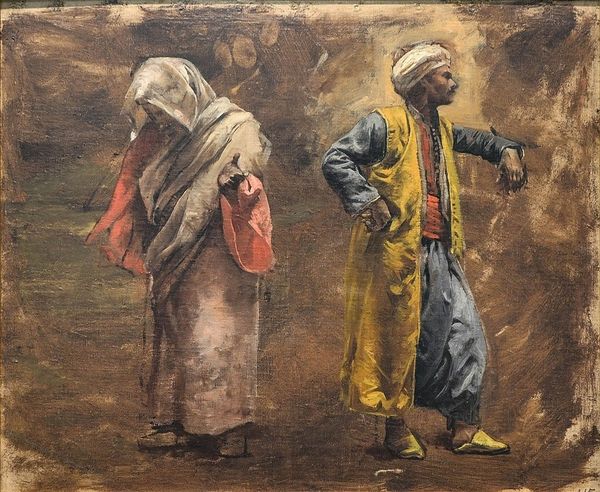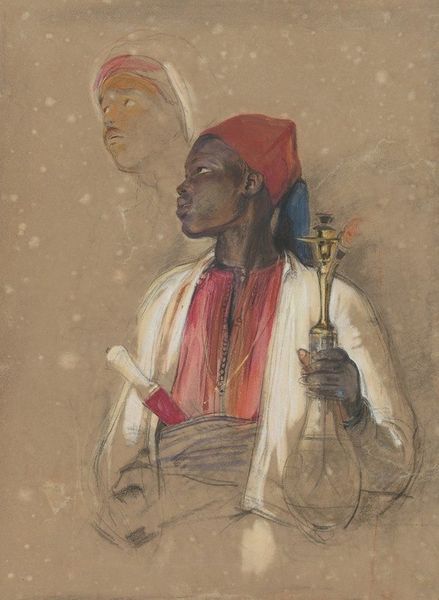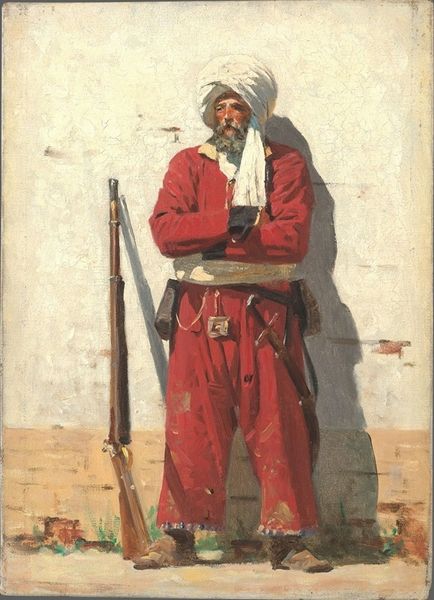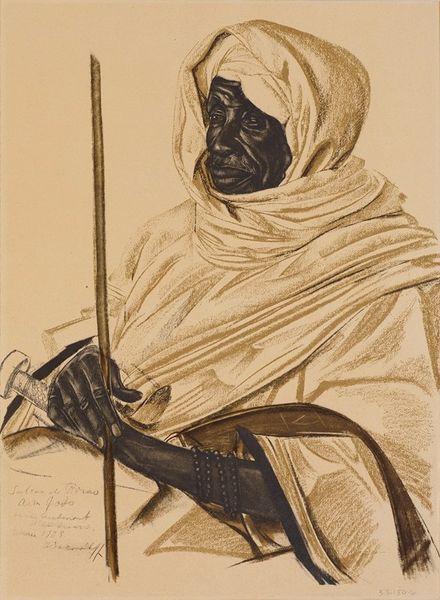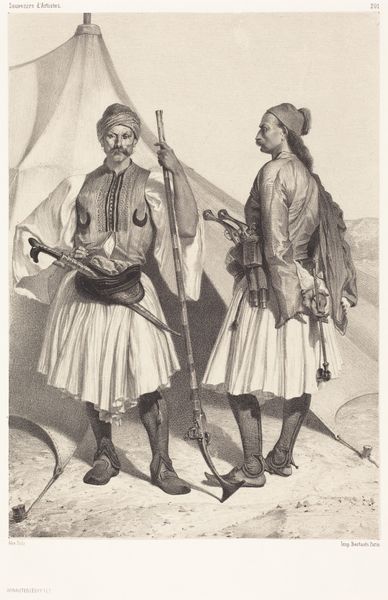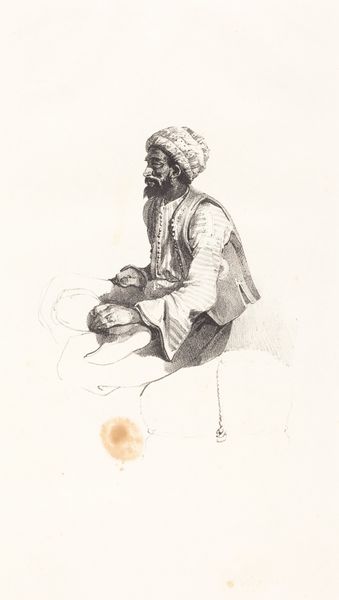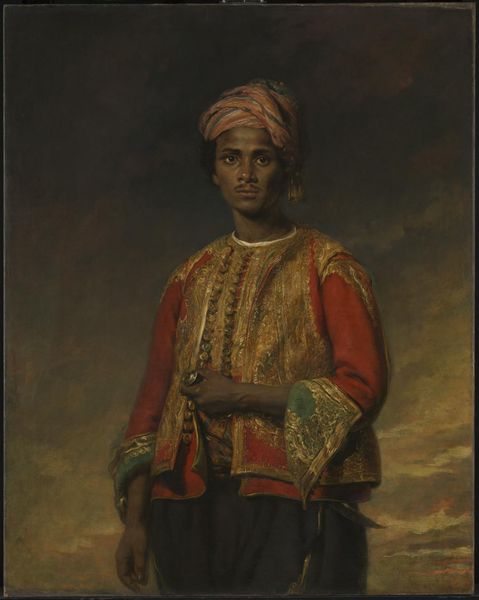
Copyright: Public Domain: Artvee
Vasily Vereshchagin’s painting, titled ‘Fakirs’ offers us a rich visual study of form and texture. The composition, dominated by two figures against a stark backdrop, uses a palette of earthy tones punctuated by the brighter reds of the subjects' garments and flag. The smooth application of paint contrasts with the rougher textures of their clothing. The two figures are meticulously rendered, inviting a semiotic reading of their attire and accoutrements. On the left, the figure's sack and simple garb speak to a life of asceticism. The figure on the right, with his elaborate headdress and the pot he carries, appears as a symbol of ritualistic practice. This juxtaposition challenges fixed notions of religious devotion, revealing the complexity inherent in spiritual expression. Consider the function of Vereshchagin's brushstrokes, which, beyond their representational role, serve to destabilize established meanings around cultural identity. Ultimately, this painting encourages us to view it not just as a depiction of Fakirs but as an ongoing exploration into cultural and spiritual representation.
Comments
No comments
Be the first to comment and join the conversation on the ultimate creative platform.

